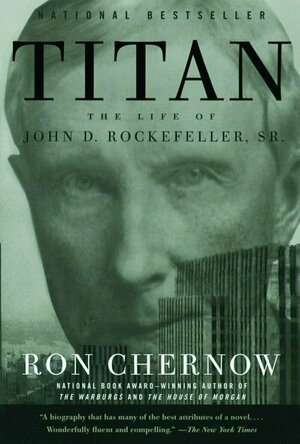
Microsoft OneNote
Productivity and Education
App
Capture your thoughts, discoveries, and ideas and simplify overwhelming planning moments in your...

Titan: The Life of John D. Rockerfeller, Sr.
Book
"John D. Rockefeller, Sr. history's first billionaire and the patriarch of America's most famous...

Dream House Design Sim Craft: Interior Exploration
Games and Entertainment
App
Build & design your own dream home. Interior design simulator app helps decorate your house with 3D...
graveyardgremlin (7194 KP) rated The Christmas Killer in Books
Feb 15, 2019
The first paragraph almost caused me to rethink my expectations of enjoyment I'd get from the book. The sentences were short and choppy, and if the whole book had been written this way, I don't think I'd have managed to get through it. Fortunately for me, it didn't turn out that way at all. Although there were more short, fragmented sentences, they were few and far between and seemed more of a style choice than anything else.
Rose was a good choice as a lead and had both positive and negative attributes to her personality. She was generally nice but could have moments of cattiness or where her temper got the best of her, which made her more believable. I can't say any of the characters are over-developed, but they are described enough to get a rough sketch of who they are as a person, and there are moments of truth in many of their actions, e.g. the mother's freaking out, the father's clamming up, and the brother's withdrawal and secretiveness. The atmosphere is done extremely well. Even though I don't remember many actual descriptions, I got the feeling of a small town, its claustrophobia, and sense of impending doom all the same.
I have to admit this book surprised me. I went in expecting more of the slasher-type YA horrors I read as a youngster, and was handed a more mature, psychological suspense horror read instead. The plot flows well and has enough clues and red herrings to keep most readers interested. As someone who has read a lot of mysteries, I did figure it out, but it could have gone many ways and still have been satisfying. The ending is the only weak point as it was a bit abrupt and maybe too open-ended, but that's a minor niggle and didn't affect my enjoyment much. As far as I've been able to tell, there is no sequel, which might be for the best. The Christmas Killer was a quick and easy chiller that kept me entertained throughout and I'd recommend it for those who like creepy teen reads.
Originally Reviewed: December 29, 2012
Received: Library
Hazel (1853 KP) rated How to Draw Anything in Books
Dec 17, 2018
First of all an artist needs to be able to look properly. Without studying the subject or object properly, no one would be able to produce an accurate sketch. Starting with landscapes, Linley tells the reader how to and what to look for when beginning a drawing in order to get a basic outline. It is only after this is down on paper that specific details can be added.
Linley explains various methods of shading and line marks to give a suggestion of perspective, and emphasises that an illustration does not need to be 100% accurate – that is what cameras are for. After landscapes, Linley takes the reader/future artist through plants, animals, people and cartoons in a similar manner.
Each chapter provides the reader with a few assignments to undertake based on what they have read, or the example illustrations. Many of these tasks are to copy Linley’s own examples, however he stresses that the outcome does not need to – or rather should not – look exactly like his. Each artist needs to develop their own style.
I found <i>How To Draw Anything</i> a lot more useful than the ever popular step-by-step guides that most people gravitate to. In those types of books we are NOT taught to draw, we are taught to copy. You may be able to accurately draw the same cat as the artist/author of the book, but you would not know where to start when face with a real life cat. Linley tells us what to look out for and where to start in these situations – you feel like you are actually learning something.
Mark Linley comes across as a humorous individual – his writing is full of puns and quips, intending to make the reader smile or laugh out loud, thus making them feel more relaxed about the subject. Linley does not only attempt to teach people how to draw, he tries to make each of us feel more comfortable about our abilities and encourages us to keep on trying.
Before reading this book I had already begun developing my own illustration style, however I gave a few of Linley’s assignments a try (see <a href="https://hazelstainer.wordpress.com/2016/02/19/how-to-draw-anything-a-review/">here</a>;). I am pleased with my outcomes and feel inspired to try more landscape drawings in the future.

MyBrushes Pro: Paint and Draw
Photo & Video and Entertainment
App
On Sale. Original $4.99. MyBrushes Pro is a revolutionary, infinite canvas drawing app that allows...

CariCartoon - Funny Cartoon Caricature Maker
Photo & Video and Entertainment
App
From the maker of popular My Sketch App with over ●10 Million Downloads● now bringing you...

BeFunky Pro - Photo Editor and Collage Maker
Photo & Video and Productivity
App
Photo Editor by BeFunky. Anything you want to do to your photo, you can do with BeFunkyPro! With all...

Vittle Pro: Recording Video Whiteboard
Business and Photo & Video
App
*** 20% off sale for Vittle Pro today! *** Create Video Screencasts from your Photos and Slides. ...

Coloring Book for Adults : Adult Coloring Book
Catalogs
App
The best coloring book for adults and kids free games is now available on your iPhone, iPad and...
